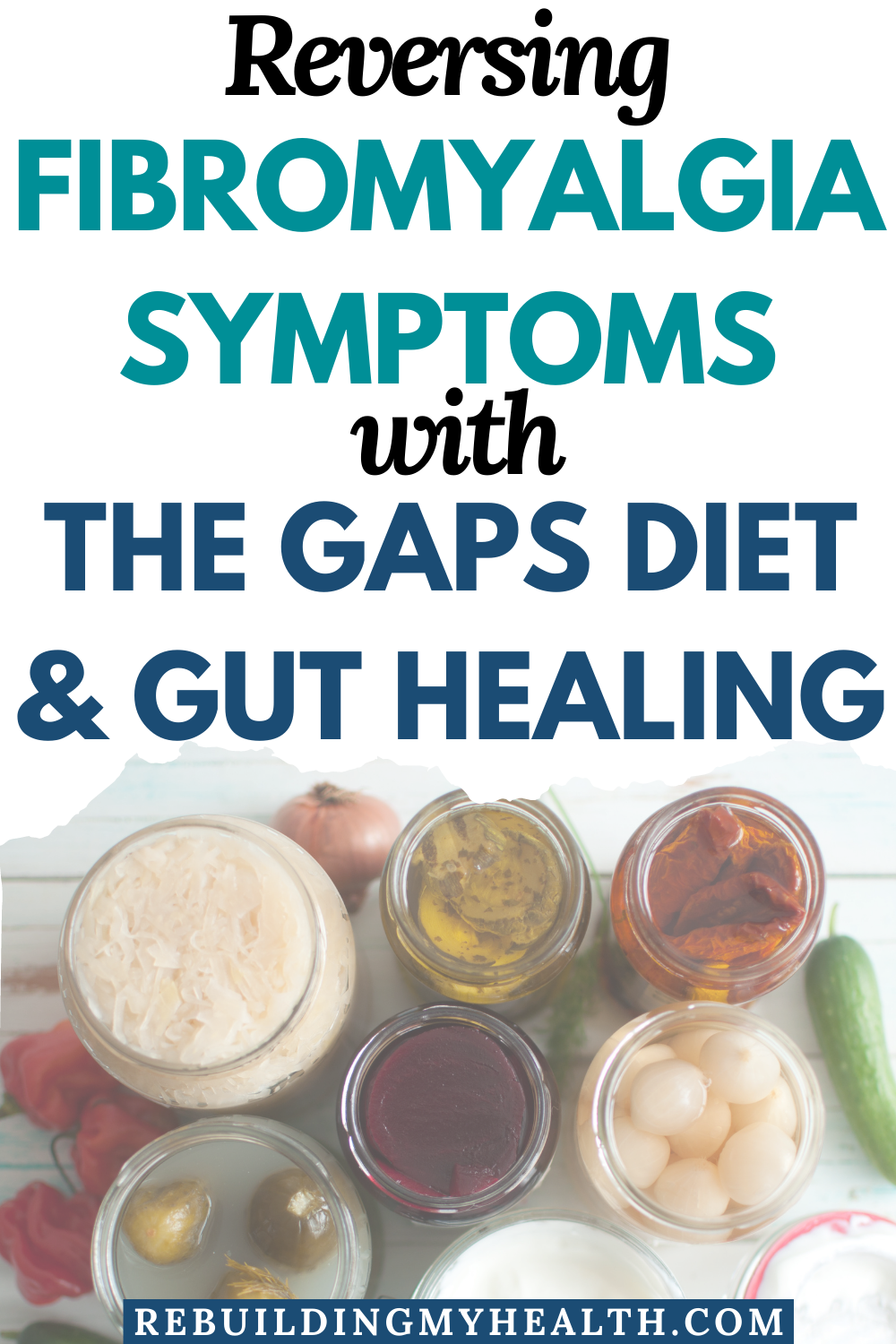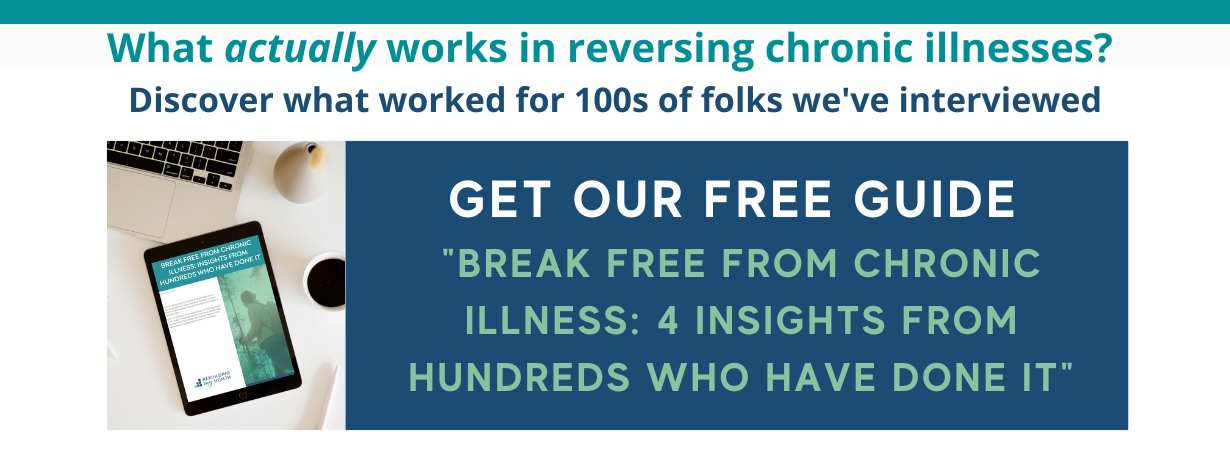Virginia Mom Turns Around Sudden-Onset Fibromyalgia with GAPS Diet, Gut Healing
“The changes we made were life-altering for us – in a good way. I want people to know that it’s doable to make changes that will transform their health. We’re not here just to survive but to thrive.”-
– Melanie
In 2013, Melanie Schwartz went to bed on a January night, feeling grateful that she had been spared from the flu – unlike the rest of her family.
Yet, when she woke the next morning, what she experienced was most definitely NOT the flu. It was much worse.
Instead, her joints were so stiff and painful that she could scarcely move. She could only extend her arms “like Barbie,” out in front of her, but not to the side. And her right hand remained frozen into a claw shape.
The mother of five cried through the pain of nursing her five-month-old, who had to be carried up the stairs by his nine-year-old sister.
“I went to bed feeling totally fine,” she says. “The next morning, literally every joint in my body hurt to the extent that I couldn’t move.”
The debilitation only worsened from there, and by day 10, hives and swelling compounded her misery.
Becoming Her Own Advocate
When it was clear that her condition wouldn’t improve, Melanie finally sought help from a doctor. He recommended testing for a slew of alarming conditions, including multiple sclerosis, lupus, fibromyalgia and rheumatoid arthritis. But Melanie declined this kind of testing because she knew what it would mean.
“I knew any testing would just lead to prescriptive suggestions and, being 35-years-old at the time, in my mind, I was both too young and unwilling to live on prescriptions for the rest of my life,” she explains. “There had to be another way. It was time to be my own advocate.”
She also didn’t totally trust testing. A few years before, amid digestive upset, tests had come back normal. And yet, she still experienced a severe gall bladder episode that ultimately led to surgery.
On the doctor’s recommendation, however, Melanie started an antibiotic in case her ailment was somehow flu-related. A few days into the antibiotic, Melanie felt no relief, and thus quit taking it.
Fermentables, the GAPS Diet for Gut Health
In the midst of her pain, Melanie decided to return to a curiosity she’d had. A local woman taught old-world cooking techniques – an approach that Melanie suspected could help her health.
Despite her debilitating symptoms, she powered through every class the woman offered: Whole-grain bread-making, fermenting 101 and 201, dehydration and sprouting.
At home, Melanie milled her own flour and sprouted grains, and consumed specific nutrients and foods as her form of medicine: minerals, cod liver oil and homemade fermented foods.
“Eating sauerkraut for the first time, it was like my body came alive and I didn’t even know it was dead,” she recalls. “That was my first introduction to the power of the gut and the microbiome. It felt like my body was waking up from a comatose state.”
“Within a couple of weeks,” she adds, “I felt remarkably better and was starting to resume some function. Excess weight was falling off and my daily, chronic pain was decreasing.”
Onto something, she explored diet further, experimenting with the Gut and Psychology Syndrome (GAPS) diet – and further catapulted her health forward.
A Fibromyalgia Diagnosis – and Much More
After eight months of experimenting on her own, Melanie had gained back about 75 percent of her function and reduced her pain considerably. For more help, she turned to the recently opened Cleveland Clinic Center for Functional Medicine. Functional medicine refers to an approach that looks for the root cause of symptoms, rather than simply trying to get rid of the symptoms.
“At my first appointment, I knew I’d finally found someone who could help me,” she recalls.
Doctors ordered a slew of tests, including bloodwork, stool testing and nutrient assessments. The latter came back “all in the red.”
“Doctors said, ‘We’ve never seen anyone with so much in the red before. How are you getting out of bed?’”
Pregnant with her sixth child at the time, Melanie says physicians thought perhaps pregnancy could explain her low nutrient numbers.
Ultimately, doctors at the Cleveland Clinic diagnosed Melanie with fibromyalgia. They began her on supplements and medications to address the deficiencies and additional conditions they found, conditions which likely contributed to her joint pain:
Nutrient levels – Melanie took vitamins, minerals and other supplements to fill in the gaps, including magnesium, vitamin D, vitamin B complex, CoQ10, liposomal glutathione, and specially compounded amino acids, among others.
SIBO (small intestinal bacterial overgrowth) – SIBO causes a number of unpleasant digestive symptoms and can sap the body of nutrients. For that, Melanie took a course of antibiotics that only targeted the small intestine.
“I felt so much better with the SIBO treatment,” she says. “I felt 20 pounds lighter without losing a pound.”
Candida – For Candida, doctors gave her the prescription, Diflucan. However, Melanie still experienced Candida symptoms in her head, such as ear pain and headaches.
“I had my energy back and was making it through the day without needing adult help,” she says. “But I was still mildly symptomatic.”
Diet – The family’s diet was already exceptionally clean. Melanie and her youngest son – also with Candida – remained on a low-sugar, gluten-free, grain-free, whole foods diet. They drank bone broth and included bone marrow for the rich nutrients within.
“My son and I would eat steamed cauliflower and beef soup in bone broth for breakfast,” she says. “We made a ton of progress with the GAPS diet. I probably would have gotten even further if I had followed the protocol more strictly and included the recommended supplements in addition to the food changes.”
Melanie also cut out foods to which she tested sensitive or had reactions, including nightshades. The nightshade family includes tomatoes, peppers and eggplant.
Melanie’s whole family ate the same base for the meal, but her active kids would often eat a carb side dish.
Heavy metals – Testing also turned up high levels of metals, including lead, nickel, thallium and gadolinium. Melanie thinks she retained some of those from previous tests that used dyes/contrast dyes. Her research indicates that gadolinium is only used in MRIs. Melanie had had an MRI way back in 2000, indicating the metal remained in her system for nearly two decades. She suspects that could have been the real root cause of her symptoms.
For detox, she turned to intermittent fasting and binders.
Hashimoto’s thyroiditis – Thyroid antibodies showed up in testing, indicating Hashimoto’s. Because of links between heavy metals, gut issues and Hashimoto’s, Melanie focused on detox to help relieve both digestive and thyroid concerns. For a short time, Melanie also took a thyroid prescription.
“I think heavy metals have always been a big piece for me because I made more progress once I started addressing that,” she says.
Adrenals – For adrenal fatigue, doctors at the Cleveland Clinic recommended that Melanie use lifestyle modifications such as breathwork/deep breathing techniques and mindfulness practices as well as the adaptogenic herb Ashwagandha. Realizing she has a sensitivity to nightshades, Melanie switched to Holy Basil as her preferred adaptogen.
A Healthy Foundation…Likely Saved Her Life
Addressing each of those areas, Melanie markedly eased her joint pain and fatigue to the point where she felt almost back to her old self. Symptoms she hadn’t even realized she had, such as brain fog and restless legs, resolved and she felt more youthful and energetic than she had in years. She even began jogging again.
She couldn’t know that all that work would potentially save her life.
For the birth of her sixth child, in 2015, she opted for a vaginal birth after having several successful vaginal births despite an earlier C-section. However, during delivery, she suffered a five-organ rupture that caused her to lose three-quarters of her body’s blood. Doctors worked tirelessly to repair the damage and replace the blood she lost.
“Four different doctors told me, ‘Nobody survives this,’” she says. “They said, had I not made the changes I did with food and supplements, then I likely would not have made it. If I had had any other comorbidity factors, this would have been a very different story.”
Paying it Forward
Today, Melanie sees scarce signs of fibromyalgia. She has the energy she needs for her family and to pursue a career in health coaching under the name Red Bridge Wellness. She’s now certified with the Functional Medicine Coaching Academy (FMCA).
She not only addressed her own complex health challenges but also helped several of her children resolve their own, from severe eczema to behavioral issues to gut dysbiosis. And she recently guided a teenager in sending his Crohn’s disease into remission.
“The changes we made were life-altering for us, in a good way,” she stresses. “I want people to know that it’s doable. We’re not here just to survive but to thrive.”
If you liked this story, you might also enjoy Ohio Woman Halts Mast Cell Activation Syndrome, Lyme and More.
The information on this site is for educational and inspirational purposes only and is not intended to replace the advice of qualified professionals. Keep in mind that what works for one person may not work for another. Always consult your healthcare practitioners before beginning new approaches or treatments. Some links on Rebuilding My Health may be affiliate links. This means that we may receive a commission - with no additional cost to you - if you make any purchases using those affiliate links. Rebuilding My Health is a participant in the Amazon Services LLC Associates Program. Learn more.



